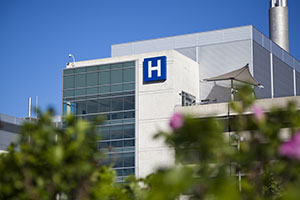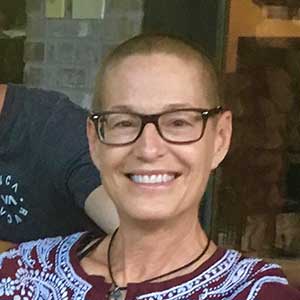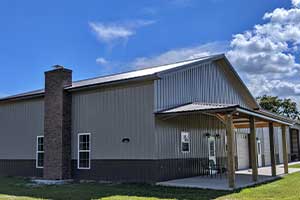Skip To Rehab Listing
Alcohol and Drug Treatment Settings and Modalities in Paso Robles, California
Alcohol and drug addiction has an effect on individuals of all ages, genders, and walks of life. The alcohol and drug rehab programs and services, such as detox centers, inpatient drug rehab centers, short term drug and alcohol rehab facilities, long term drug rehab centers, outpatient substance abuse treatment services, are designed to offer high-quality care to anyone who has a problem with addiction, no matter their personal circumstance.
Drug and alcohol treatment programs in the Paso Robles area are not all the same. They offer a variety of modalities, like cognitive/behavior therapy, rational emotive behavioral therapy, individual psychotherapy, dual diagnosis drug rehab, anger management, motivational interviewing, that enable clients to address their alcohol and drug dependency in the way that is most beneficial for them.
Special Services for Substance Abuse Recovery
In spite of the widespread presence of substance abuse, each person who struggles with drug and alcohol addiction problems has their own specific circumstances that require a personalized approach. That is why the rehabilitation programs in Paso Robles offer several special resources such as persons with serious mental illness, treatment for spanish-speaking clients, housing services, child care for clients children, persons who have experienced sexual abuse, domestic violence.
Treatment Payment Options
Patients and their families should not defer treatment because of worries about cost. Rehabilitation programs offer several possibilities for payment, including the following: cash or self-payment, private insurance, military insurance, payment assistance, county or local government funds, state corrections or juvenile justice funds. Drug and alcohol rehabilitation programs can direct clients and their families toward the payment plans that will put rehab within their reach.
Those who struggle with drug and alcohol addiction should not wait to take advantage of the various services available in Paso Robles, CA..
Commonly Asked Questions about Addiction and Treatment
How does drug addiction affect relationships?
Drug addiction can profoundly impact relationships, often causing strain, conflict, and emotional distress. Here are some ways that drug addiction can affect interpersonal relationships:
- Trust Issues: Drug addiction often leads to behaviors such as lying, stealing, or manipulating to obtain drugs or hide the extent of drug use. These actions can severely undermine trust in a relationship.
- Neglect of Responsibilities: Individuals struggling with drug addiction may neglect their responsibilities at home, work, or school, which can create additional stress and conflict within their relationships.
- Financial Strain: The cost of sustaining a drug habit can lead to financial problems, including debt, which can put significant strain on relationships, especially those involving shared finances.
- Emotional Distance: Drug use can alter an individual's emotional state, causing them to become distant, withdrawn, or emotionally unavailable. This can make it challenging to maintain close, meaningful relationships.
- Conflict and Arguments: Disagreements over drug use and its consequences can lead to frequent arguments, causing tension and unhappiness in the relationship.
- Codependency: In some cases, the partner or family member of a person struggling with addiction may develop a pattern of behavior known as codependency. They may enable the addiction, sacrifice their own needs, and become overly focused on the addicted individual, which can be harmful for both parties.
- Abuse or Violence: Sadly, drug addiction can sometimes lead to verbal, physical, or emotional abuse. Certain substances can lower inhibitions and increase aggression, leading to harmful behavior.
- Isolation: People struggling with addiction often isolate themselves from their friends and family, either out of shame or to hide their drug use. This can lead to feelings of loneliness and disconnection.
How can a homeless person get help for substance abuse?
For homeless individuals struggling with substance abuse, accessing help can be particularly challenging due to factors such as limited resources, absence of stable housing, and potential co-occurring mental health disorders. However, there are a number of avenues that a homeless person can explore to get help:
Government Programs: Many cities have government-funded programs that provide services for homeless individuals, including substance abuse treatment. These may include detoxification, outpatient counseling, residential treatment, and medication-assisted treatment. The U.S. Department of Housing and Urban Development (HUD) and the Substance Abuse and Mental Health Services Administration (SAMHSA) are two significant sources of such assistance.
Community Health Clinics: Community health clinics often offer a range of services, including substance abuse treatment, on a sliding scale based on income. These clinics also frequently provide referrals to other necessary services.
Nonprofit Organizations: Many nonprofit organizations offer resources and support for homeless individuals struggling with substance abuse. These may include recovery support groups, transitional housing, job training programs, and other services.
Outreach Programs: Outreach programs are designed to connect with individuals who may not seek help on their own. Outreach workers may go to places where homeless individuals congregate to provide resources and assistance.
Housing First Programs: These programs, which prioritize providing individuals with stable housing without requiring sobriety or participation in treatment first, have been shown to be effective in helping people maintain recovery and improve their quality of life.
Emergency Departments and Hospitals: In a crisis, emergency medical personnel can provide immediate assistance and connect individuals with longer-term substance abuse treatment resources.
Veterans Services: If the individual is a veteran, the U.S. Department of Veterans Affairs offers many services, including substance abuse treatment, mental health services, and housing assistance.
What are the signs of liver damage from alcoholism?
Alcoholism, or Alcohol Use Disorder (AUD), can lead to liver damage over time as the liver struggles to process excessive amounts of alcohol. Liver damage due to alcoholism can manifest in various ways, with signs ranging from mild to severe. Some common signs of liver damage from alcoholism include:
- Jaundice: One of the most recognizable signs of liver damage is the yellowing of the skin and eyes, known as jaundice. This occurs when the liver is unable to properly process bilirubin, a waste product that accumulates in the body.
- Abdominal pain: Individuals with liver damage may experience pain or discomfort in the upper right abdomen, where the liver is located.
- Swelling in the abdomen: Liver damage can lead to the accumulation of fluid in the abdominal cavity, a condition known as ascites. This can cause swelling and discomfort in the abdomen.
- Fatigue: Impaired liver function can result in persistent fatigue, weakness, and a general lack of energy.
- Dark urine: Liver damage can cause the urine to become darker in color, often appearing brown or tea-colored.
- Pale or bloody stools: Individuals with liver damage may notice pale, clay-colored, or bloody stools, indicating that the liver is struggling to process waste products.
- Bruising or bleeding easily: The liver plays a crucial role in blood clotting. When the liver is damaged, it may struggle to produce adequate clotting factors, resulting in easy bruising or prolonged bleeding from minor cuts or injuries.
- Loss of appetite: Liver damage can lead to a decreased appetite or unexplained weight loss.
- Nausea and vomiting: Impaired liver function can cause feelings of nausea or even vomiting.
- Itchy skin: Liver damage can result in the buildup of bile salts in the skin, leading to itchiness and irritation.
- Spider angiomas: Some individuals with liver damage may develop small, spider-like blood vessels visible beneath the skin, known as spider angiomas.
- Confusion or disorientation: In advanced cases of liver damage, toxins that would normally be filtered by the liver can build up in the bloodstream and affect brain function, leading to confusion, disorientation, or even coma.
It is important to seek medical attention if you or someone you know is experiencing signs of liver damage from alcoholism. Early diagnosis and intervention can help prevent further damage and improve the chances of recovery. Treatment may include abstaining from alcohol, making lifestyle changes, and addressing any underlying health conditions contributing to liver damage.













